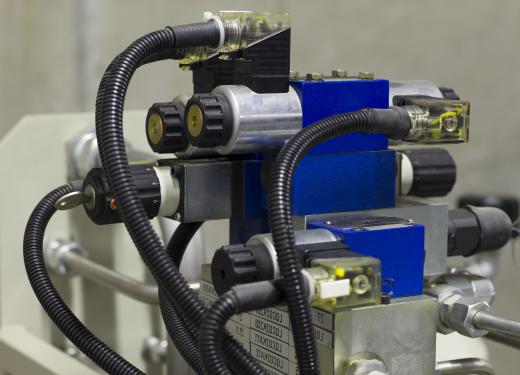A solenoid core is a rod that rests in the center of a solenoid coil and offers several beneficial attributes. If a solenoid core is iron, or any ferromagnetic metal, then this can increase the solenoid’s regular magnetic power substantially. Air core units are usually made from glass and do not increase magnetic strength, but they do work better at high frequencies. While a core is common in a solenoid, it can be removed and the solenoid can still work. A solenoid core also helps protect the solenoid coil’s shape and prevents major denting to the coil.
The most common type of solenoid core is an iron or ferromagnetic core. This type of core reacts strongly with magnetic forces and boosts the solenoid’s normal magnetic force. Some metals can boost the strength slightly, while others can increase the solenoid’s strength by 100 times. The magnetic domains of both the core and solenoid match up when energy is pushed through the solenoid, so the two react together to create a powerful magnetic force.

Another type of solenoid core is the air core, which is normally made from glass or plastic. Unlike an iron core, an air core is unable to increase the solenoid’s magnetic power, because glass and plastic do not have a magnetic force like iron does. At the same time, a solenoid with an air core functions better at high frequencies and normally can reach 1 gigahertz (GHz) compared to a metal core that normally can reach around 100 megahertz (MHz).
Most solenoids have a solenoid core, either to increase the magnetic force or to increase the coil’s stability at high frequencies. If the user wants, he or she can easily remove the core by sliding it out of the coil. This is normally done to decrease a magnetic force that is too powerful or to make the solenoid weigh less.
A solenoid is a tightly wound wire, so it is difficult to bend or damage the coil. At the same time, if the coil is bent by a powerful force or hit, it can ruin the entire device and render it useless. The solenoid core is typically made of a tough and durable material, whether it is glass or iron, and the core is able to further absorb shock. This means the core will usually enhance the solenoid’s durability and longevity.
